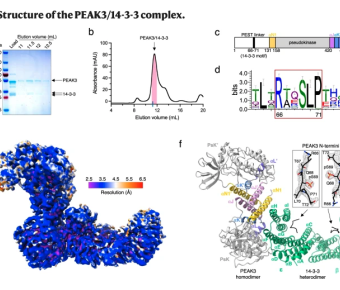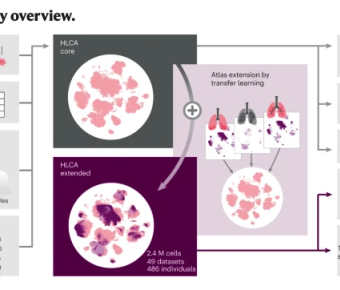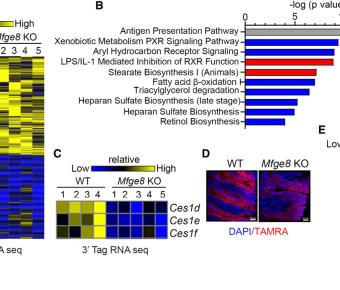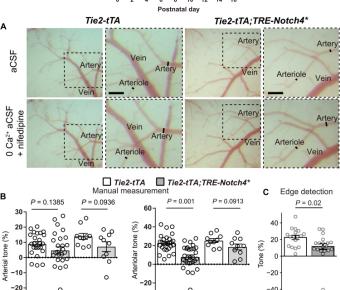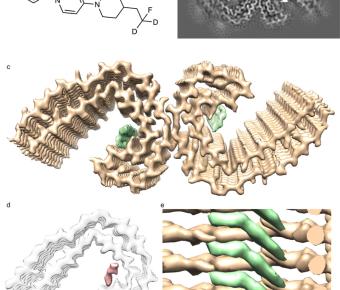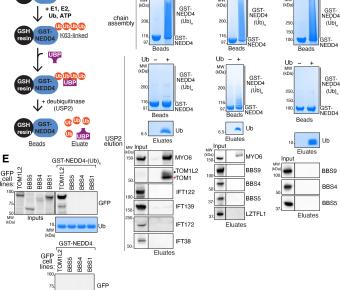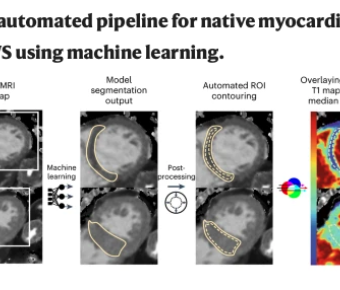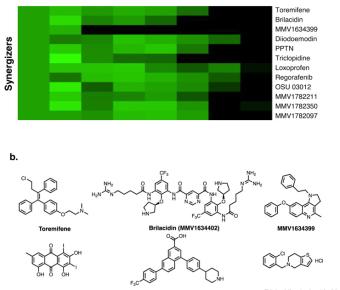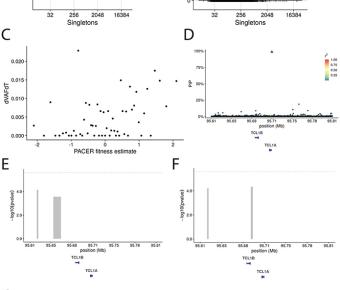Structural insights into regulation of the PEAK3 pseudokinase scaffold by 14-3-3
June 19, 2023
PEAK pseudokinases are molecular scaffolds which dimerize to regulate cell migration, morphology, and proliferation, as well as cancer progression. The mechanistic role dimerization plays in PEAK scaffolding remains unclear, as there are no structures of PEAKs in complex with their interactors.... An integrated cell atlas of the lung in health and disease.
June 08, 2023
Single-cell technologies have transformed our understanding of human tissues. Yet, studies typically capture only a limited number of donors and disagree on cell type definitions. Integrating many single-cell datasets can address these limitations of individual studies and capture the variability... MFGE8 links absorption of dietary fatty acids with catabolism of enterocyte lipid stores through HNF4γ-dependent transcription of CES enzymes
May 28, 2023
Enterocytes modulate the extent of postprandial lipemia by storing dietary fats in cytoplasmic lipid droplets (cLDs). We have previously shown that the integrin ligand MFGE8 links absorption of dietary fats with activation of triglyceride (TG) hydrolases that catabolize cLDs for chylomicron... Nitric oxide synthase and reduced arterial tone contribute to arteriovenous malformation.
May 26, 2023
Mechanisms underlying arteriovenous malformations (AVMs) are poorly understood. Using mice with endothelial cell (EC) expression of constitutively active Notch4 (Notch4*EC), we show decreased arteriolar tone in vivo during brain AVM initiation. Reduced vascular tone is a primary effect of Notch4*EC... Stacked binding of a PET ligand to Alzheimer's tau paired helical filaments
May 26, 2023
Accumulation of filamentous aggregates of tau protein in the brain is a pathological hallmark of Alzheimer's disease (AD) and many other neurodegenerative tauopathies. The filaments adopt disease-specific cross-β amyloid conformations that self-propagate and are implicated in neuronal loss.... The ancestral ESCRT protein TOM1L2 selects ubiquitinated cargoes for retrieval from cilia.
April 24, 2023
Many G protein-coupled receptors (GPCRs) reside within cilia of mammalian cells and must undergo regulated exit from cilia for the appropriate transduction of signals such as hedgehog morphogens. Lysine 63-linked ubiquitin (UbK63) chains mark GPCRs for regulated removal from cilia, but the... Genetics of myocardial interstitial fibrosis in the human heart and association with disease
April 20, 2023
Myocardial interstitial fibrosis is associated with cardiovascular disease and adverse prognosis. Here, to investigate the biological pathways that underlie fibrosis in the human heart, we developed a machine learning model to measure native myocardial T1 time, a marker of myocardial fibrosis, in... The next big questions in cancer research
April 13, 2023
Our understanding of tumorigenesis and cancer progression as well as clinical therapies for different cancer types have evolved dramatically in recent years. However, even with this progress, there are big challenges for scientists and oncologists to tackle, ranging from unpacking the molecular and... A host defense peptide mimetic, brilacidin, potentiates caspofungin antifungal activity against human pathogenic fungi.
April 12, 2023
Fungal infections cause more than 1.5 million deaths a year. Due to emerging antifungal drug resistance, novel strategies are urgently needed to combat life-threatening fungal diseases. Here, we identify the host defense peptide mimetic, brilacidin (BRI) as a synergizer with caspofungin (CAS)... Aberrant activation of TCL1A promotes stem cell expansion in clonal haematopoiesis
April 01, 2023
Mutations in a diverse set of driver genes increase the fitness of haematopoietic stem cells (HSCs), leading to clonal haematopoiesis1. These lesions are precursors for blood cancers2-6, but the basis of their fitness advantage remains largely unknown, partly owing to a paucity of large cohorts in... 
